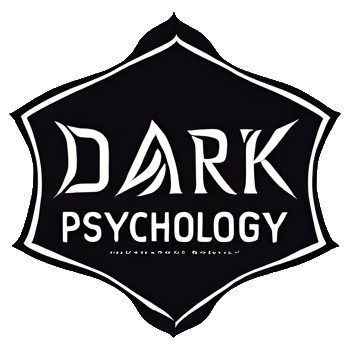What Is the Dark Triad?
The term Dark Triad refers to a constellation of three socially aversive personality traits: Narcissism, Machiavellianism, and Psychopathy. Coined by researchers Delroy L. Paulhus and Kevin M. Williams in 2002, this concept has become a cornerstone in personality psychology for understanding the darker shades of human character. While these three traits are distinct and can exist independently, they often overlap, creating a personality profile that is manipulative, emotionally cold, and self-serving. Understanding the Dark Triad is crucial not just for psychologists, but for anyone navigating complex social, romantic, or professional environments, as it provides a framework for recognizing potentially harmful behavioral patterns.
At its core, the Dark Triad represents a spectrum. Most people exhibit minor degrees of these traits—a bit of selfishness, a white lie, or a desire for admiration. However, individuals who score highly on Dark Triad measures display these characteristics in a pronounced, persistent, and dysfunctional manner, often leading to negative consequences for those around them. This article will serve as a comprehensive guide, delving into each of the three traits, their interconnections, how to identify them, and their impact in various spheres of life.
The Three Faces of Darkness: Breaking Down the Triad
The power of the Dark Triad model lies in its ability to group three related yet distinct personalities. Let’s explore each one in detail.
1. Narcissism
Narcissism, derived from the Greek myth of Narcissus who fell in love with his own reflection, is characterized by an inflated sense of self-importance, a deep need for excessive attention and admiration, troubled relationships, and a lack of empathy for others. However, behind this mask of extreme confidence often lies a fragile self-esteem that’s vulnerable to the slightest criticism.
Key characteristics of narcissism include:
- Grandiosity: A belief that one is unique, special, or superior to others and can only be understood by other high-status people.
- Attention-Seeking: A constant need for praise, validation, and admiration from others.
- Lack of Empathy: An unwillingness or inability to recognize or identify with the feelings and needs of others.
- Sense of Entitlement: An unreasonable expectation of favorable treatment or automatic compliance with their expectations.
- Exploitativeness: A willingness to take advantage of others to achieve their own goals.
2. Machiavellianism
This trait is named after Niccolò Machiavelli, the Renaissance author of “The Prince,” a political treatise that advocated cunning, duplicity, and a ends-justify-the-means approach to power. In psychology, Machiavellianism describes a personality that is manipulative, strategically calculating, and focused on self-interest and personal gain. Unlike the flamboyant narcissist, the high-Mach individual is often cool, detached, and pragmatic.
Key characteristics of Machiavellianism include:
- Strategic Manipulation: A masterful ability to deceive, flatter, and exploit others for long-term gain.
- Cynical View of Others: A belief that people are easily manipulated and that morality is a weakness.
- Emotional Detachment: A lack of strong emotional connections, which allows for easier manipulation.
- Focus on Planning: A calculated, long-term approach to social interactions, viewing them as chess games to be won.
- Pragmatic Morality: A flexible relationship with the truth and ethical principles, adapting them to suit the situation.
3. Psychopathy
Perhaps the most alarming of the three, psychopathy is marked by a lack of empathy or remorse, antisocial behavior, impulsivity, and boldness. It’s important to distinguish this subclinical trait from Antisocial Personality Disorder (ASPD), a clinical diagnosis. The Dark Triad version of psychopathy is about traits, not a full-blown disorder, though they exist on a continuum.
Key characteristics of psychopathy include:
- Low Empathy and Remorse: A profound inability to feel for others or guilt for their harmful actions.
- Impulsivity and Thrill-Seeking: A tendency to act on whims without considering consequences, often seeking out risky situations.
- Shallow Affect: A poverty of emotional responses; their emotions are short-lived and superficial.
- Charm and Superficial Charisma: An often magnetic and engaging exterior used to disarm and lure others.
- Irresponsibility: A consistent failure to fulfill work, financial, or social obligations.
How the Dark Triad Traits Overlap and Differ
While the Dark Triad traits form a cohesive “dark” core, they are not identical. The table below highlights their key similarities and differences.
| Trait | Primary Motivation | Social Style | Key Differentiator |
|---|---|---|---|
| Narcissism | Validation and Ego Reinforcement | Charismatic, Arrogant, Attention-Demanding | The fragile ego and need for admiration; their grandiosity is a defense mechanism. |
| Machiavellianism | Power, Control, and Long-Term Gain | Calculating, Reserved, Strategic | The cold, pragmatic, and long-term planning nature of their manipulation. |
| Psychopathy | Thrills and Immediate Gratification | Charming, Impulsive, Fearless | The profound lack of empathy, remorse, and high impulsivity. |
As you can see, a narcissist might manipulate for praise, a Machiavellian for a promotion, and a psychopath might do it simply for the thrill or because it’s the easiest path to what they want at that moment. A key unifying factor is the use of manipulation, but the underlying drivers and execution styles vary significantly.
Identifying Dark Triad Traits in Everyday Life
You don’t need to be a psychologist to spot the red flags associated with the Dark Triad. Here are some practical signs to watch for in different contexts.
In the Workplace
Individuals high in Dark Triad traits can be both highly successful and deeply destructive in corporate settings. They are often drawn to positions of power and influence.
- Taking Credit and Shifting Blame: They consistently claim success for team efforts but are quick to point fingers when things go wrong.
- Charming Up, Kicking Down: They are excessively flattering to superiors while being dismissive or abusive to subordinates.
- Spreading Gossip and Sabotage: They create alliances and use information as a weapon to undermine colleagues.
- Lack of Long-Term Team Loyalty: They view colleagues as stepping stones and will jump ship without hesitation for a better offer.
In Romantic Relationships
Relationships with high Dark Triad individuals often follow a painful cycle of idealization, devaluation, and discard.
- Love Bombing: An initial phase of intense flattery, attention, and charm to quickly secure your affection and trust.
- Gaslighting: Manipulating you into doubting your own perceptions, memory, or sanity. They might deny saying something you clearly heard.
- Lack of Genuine Empathy: They are unable to provide authentic emotional support during your times of need.
- Triangulation: Bringing a third person (an ex, a friend) into the dynamic to create jealousy and insecurity, thereby increasing your dependence on them.
The Dark Triad in the Digital Age and Popular Culture
The rise of social media has created a fertile ground for Dark Triad traits to flourish. The anonymity, the curated personas, and the constant stream of validation are a perfect storm. Online trolls, for instance, often exhibit high levels of psychopathy and Machiavellianism, deriving pleasure from causing distress without facing immediate consequences. The “influencer” culture can also attract individuals with narcissistic traits, who thrive on the constant attention and curated adoration.
In popular culture, characters high in the Dark Triad are often compelling antagonists. For a deeper dive into the psychology of such characters, you can explore this resource from Psychology Today. From the strategic cunning of Frank Underwood in “House of Cards” (high in Machiavellianism) to the flamboyant self-absorption of Jordan Belfort in “The Wolf of Wall Street” (high in narcissism), these personalities captivate us because they represent the extremes of human behavior we recognize, however faintly, in the real world.
Scientific Measurement and Criticisms
Researchers typically measure the Dark Triad using self-report questionnaires. The most famous is the “Dirty Dozen,” a concise 12-item scale, and the more comprehensive “Short Dark Triad” (SD3). These tools help quantify these traits in non-clinical populations for research purposes.
However, the model is not without its critics. Some argue that Psychopathy and Machiavellianism overlap too much and should be combined. Others have proposed a “Dark Tetrad,” adding Sadism—the deriving of pleasure from inflicting pain on others—as a fourth fundamental dark trait. Research into this expanded model is ongoing, suggesting that the map of humanity’s darker impulses is still being refined. A detailed academic overview of these traits can be found in this article from the SAGE Journals platform.
Navigating Interactions with Dark Triad Personalities
If you suspect you are dealing with someone high in Dark Triad traits, protecting your well-being is paramount. Here are some practical strategies:
- Set Firm Boundaries: Be clear and consistent about what behavior you will and will not accept. Do not compromise on your core values.
- Manage Your Expectations: Do not expect empathy, loyalty, or genuine change. Understanding their nature helps you avoid repeated disappointment.
- Document Interactions: Especially in the workplace, keep a written record of agreements, emails, and incidents to protect yourself from gaslighting or blame-shifting.
- Limit Personal Disclosure: The less they know about your insecurities and personal life, the less ammunition they have to manipulate you.
- Seek Support: Talk to trusted friends, family, or a therapist. An external perspective can provide validation and clarity, countering the effects of gaslighting.
For more in-depth strategies on dealing with manipulative behavior, this guide from Verywell Mind offers valuable insights.
Puedes visitar Zatiandrops y leer increíbles historias
Navigating the Gray Areas: Subclinical Manifestations
While the Dark Triad is often discussed in its full, personality-disordered form, it is crucial to understand its subclinical manifestations. These are the everyday versions of these traits that exist in individuals who would not qualify for a clinical diagnosis but still exhibit these tendencies in their personal and professional lives. This “everyday darkness” can be just as impactful, influencing workplace dynamics, romantic relationships, and social interactions. For instance, a manager might not be a full-blown narcissist but may display significant narcissistic tendencies by consistently taking credit for their team’s work. Similarly, a partner might not be psychopathic but could show a pronounced lack of empathy during conflicts. Recognizing these subtler forms is key to identifying toxic patterns before they escalate and cause significant harm.
The Digital Playground: Dark Triad in Online Environments
The architecture of the internet and social media platforms has created a fertile ground for the expression and amplification of Dark Triad traits. The anonymity, physical distance, and potential for wide-reaching influence act as a catalyst for these personalities.
Trolling and Cyberbullying
Online trolling is a classic example of Machiavellianism and psychopathy in action. Trolls engage in provocative behavior to manipulate others’ emotional states for their own amusement, a process known as negative social potency. They derive pleasure from creating chaos and distress, demonstrating a clear lack of empathy and a desire for control. Cyberbullying often follows a similar pattern, where individuals with these dark traits systematically target victims to assert dominance and inflict psychological pain.
Curated Narcissism on Social Media
Social media platforms like Instagram and Facebook are built for narcissistic expression. The constant pursuit of likes, shares, and comments feeds the narcissist’s need for admiration and validation. They can carefully curate a perfect life, using filters and selective sharing to maintain a grandiose self-image. This environment not only attracts those with pre-existing narcissistic traits but can also nurture and reinforce these tendencies in otherwise healthy individuals, blurring the line between normal self-promotion and pathological narcissism.
Digital Manipulation and Scams
The digital world is rife with opportunities for Machiavellian manipulation. From catfishing and romance scams to sophisticated phishing attacks, individuals high in Machiavellianism exploit the trust and anonymity of the internet. They are adept at crafting believable false identities and narratives to deceive others for financial gain, personal information, or simply the thrill of successful deception. The following table outlines common online behaviors associated with each trait:
| Dark Triad Trait | Common Online Behaviors |
|---|---|
| Machiavellianism |
|
| Narcissism |
|
| Psychopathy |
|
Beyond the Triad: The Dark Tetrad and Sadism
Recent psychological research has proposed expanding the model to include a fourth dimension: everyday sadism. This creates what is known as the “Dark Tetrad.” Everyday sadism involves deriving pleasure from inflicting physical, psychological, or emotional pain on others. Unlike psychopathy, which is defined by a lack of empathy, sadism is actively defined by the enjoyment of cruelty. This trait explains behaviors that the core three traits do not fully capture, such as:
- The enjoyment of watching violent or humiliating videos online.
- Engaging in brutal online harassment campaigns (“dogpiling”).
- Volunteering for jobs or roles that involve administering punishment.
The inclusion of sadism helps to complete the picture of malevolent personality, accounting for the direct and active pursuit of cruelty for its own sake. Studies, such as those published in the journal Social Psychological and Personality Science, have found that these four traits often overlap and share a common “dark core.”
Neurobiological Underpinnings of the Dark Triad
Scientists are increasingly looking at the brain to understand the origins of these complex traits. While no single “dark triad brain” exists, neuroimaging studies have begun to identify correlating patterns in brain structure and function.
The Empathy Deficit and Brain Activity
Both psychopathy and narcissism are linked to abnormalities in the brain regions responsible for empathy. Functional MRI (fMRI) studies have shown reduced activity in the prefrontal cortex and amygdala when individuals with high psychopathy scores are shown distressing images or are asked to consider the emotions of others. The prefrontal cortex is involved in moral reasoning and impulse control, while the amygdala processes emotional reactions, particularly fear. This neurological profile may underpin the core empathy deficit seen in these traits.
Reward Processing and Narcissism
For narcissism, research suggests an hyper-reactive reward system. The brain’s ventral striatum, a key region for processing rewards, shows heightened activity when narcissists receive social admiration or validation. This may explain their relentless pursuit of status and their intense, often aggressive, reaction to criticism—the latter representing a threat to their neurological reward pathway.
The Genetic Component
Behavioral genetics research using twin studies indicates that a significant portion of the variance in Dark Triad traits is heritable. It is not a single “dark gene,” but rather a complex interplay of multiple genes that influence personality development. These genetic predispositions then interact with environmental factors, such as childhood trauma, parenting style, and social influences, to shape the final expression of these traits. For a deeper dive into the genetics of personality, the National Institute of Mental Health provides extensive resources.
Cultural and Gender Variations in Dark Triad Expression
The manifestation and prevalence of Dark Triad traits are not uniform across cultures and genders. Social norms, values, and expectations play a significant role in how these traits are expressed and whether they are rewarded or punished.
Gender Differences
On average, men tend to score higher than women on measures of all three Dark Triad traits, particularly on psychopathy. However, the expression of these traits often differs. For example, male narcissism might be expressed through overt dominance and aggression, while female narcissism might manifest as vanity or relational manipulation. Similarly, male Machiavellianism might focus on career and financial manipulation, while females might apply it more within social networks. It is critical to note that these are broad trends with significant individual variation, and anyone of any gender can possess these traits.
Cultural Influences
Individualistic cultures, which emphasize personal achievement and self-reliance, may inadvertently foster and reward narcissistic traits. In these societies, charismatic, self-promoting individuals often rise to positions of leadership. In contrast, collectivist cultures, which prioritize group harmony and interdependence, may suppress the overt expression of narcissism but could provide a different landscape for Machiavellian manipulation within complex social hierarchies. The acceptability of certain behaviors, such as assertiveness or emotional expressiveness, shapes how the dark triad is displayed. The American Psychological Association often highlights the importance of cultural context in psychological assessment.
Mitigation and Management: Can Dark Triad Traits Be Changed?
Given the significant harm associated with the Dark Triad, a critical question is whether these traits are immutable or amenable to change. While personality is generally stable, particularly the core aspects of psychopathy, certain interventions can help manage the negative behaviors associated with these traits.
Therapeutic Approaches
Traditional therapy is challenging with this population, as individuals often lack the motivation to change. However, certain modalities can show results:
- Cognitive-Behavioral Therapy (CBT): Can help individuals recognize the link between their thoughts, feelings, and manipulative behaviors. It can teach more pro-social methods for achieving goals.
- Schema Therapy: Useful for addressing the early maladaptive schemas (e.g., mistrust, emotional deprivation) that may underpin the development of these traits.
- Mentalization-Based Treatment (MBT): Aims to improve the capacity to understand one’s own and others’ mental states, directly targeting the empathy deficit.
Success in therapy is highly dependent on the individual’s level of self-awareness and their willingness to engage in the process. For those with subclinical traits, therapy can be highly effective in fostering healthier relationship patterns.
Institutional and Organizational Strategies
In workplaces and other institutions, the focus should be on prevention and containment rather than rehabilitation. This involves:
- Implementing robust hiring practices that include personality assessments and thorough reference checks to screen for problematic traits.
- Creating a strong organizational culture with zero tolerance for bullying, harassment, and manipulation.
- Establishing clear channels for reporting unethical behavior without fear of retaliation.
- Providing leadership training that emphasizes emotional intelligence and ethical decision-making.
By creating systems that do not reward manipulative or callous behavior, organizations can reduce the negative impact of individuals with dark triad traits.






Leave a Reply